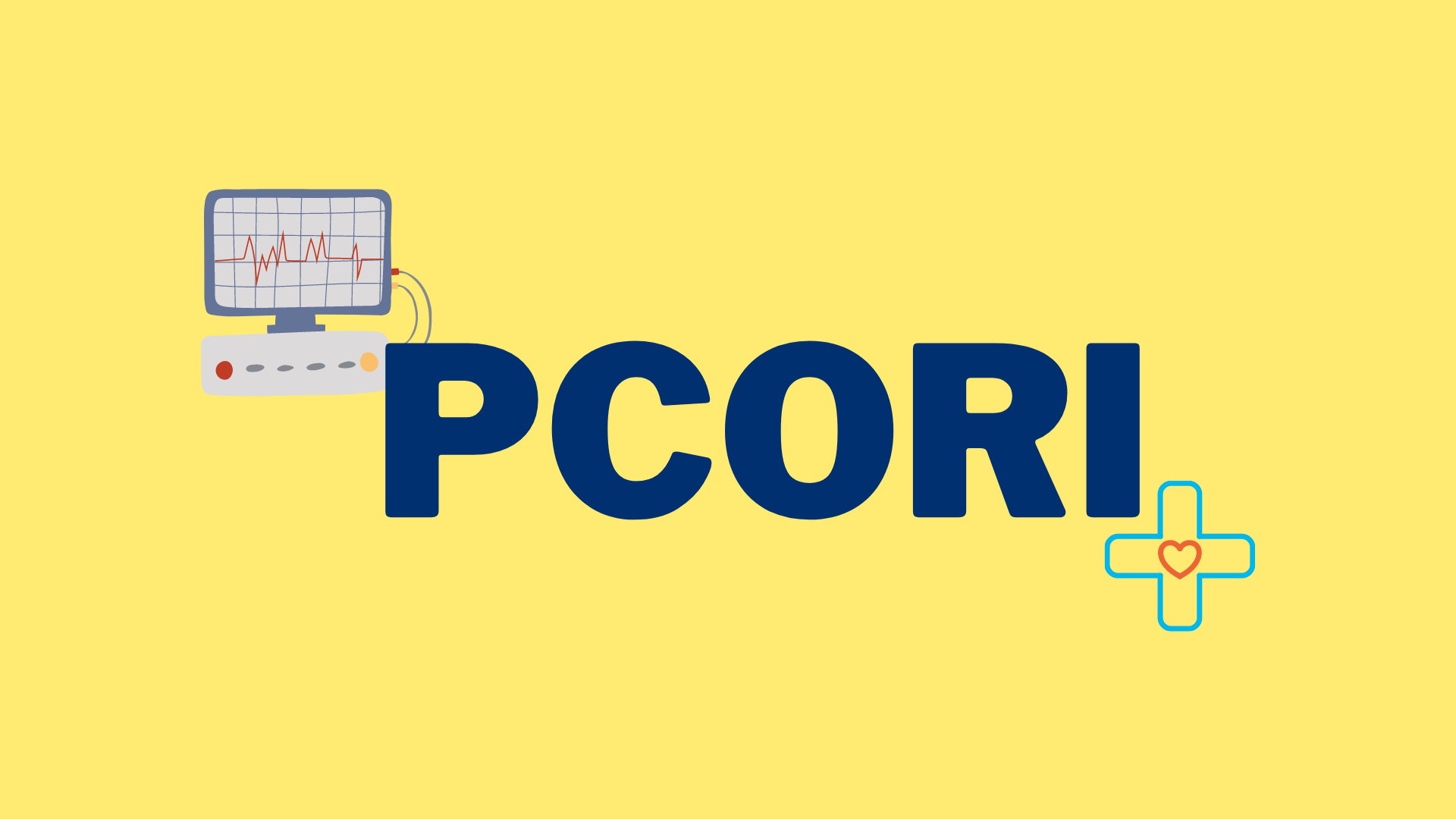Employees today are looking for more than a good package and good perks. They are looking for an employer that cares for them and their families. So, when we talk about showing that care and concern to the employees in gestures, health insurance tops the list. This is why provisions like 1094-C and 1095-C are in place. But what are forms 1094-C and 1095-C?

This article will cover the following:
- What are forms 1094-C and 1095-C?
- What is the difference between forms 1094-C and 1095-C?
- Important requirements for form 1095-c.
- How to file form 1094?
- Who should file forms 1094-C and 1095-C?
- Steps to master forms 1094-C and 1095-C.
- How to file for an extension?
- FAQs on 1094-C and 1095-C.
What are Forms 1094-C and 1095-C?
Form 1094-C and Form 1095-C are forms used to report required information about healthcare to the IRS. Following the Affordable Care Act (ACA), all applicable big employers (ALEs) need to report whether they’ve offered health coverage to each employee and whether those employees are enrolled in health coverage.
Form 1094-C is the summary of this information for all employees. Employers must file a Form 1095-C for all full-time employees during any month of the calendar year.
They also need to send a copy of Form 1095-C to these employees. Section 6055 states Form 1094 must be provided to the IRS to report minimum essential health care coverage and a Form 1095 to each covered individual.
What is the Difference Between 1094-C and 1095-C?
The main difference between Form 1094-C and 1095-C is who receives each form. Form 1095-C is sent to both employees and the IRS as it provides information about each employee’s health insurance coverage.
Form 1094-C only gets sent to the IRS. It reports information about employer coverage and acts as a cover sheet to transmit Form 1095-C to the IRS. The information reported on Form 1094-C and Form 1095-C determines whether an employer is potentially liable for payment under the employer shared responsibility provisions of section 4980H and the payment amount if any.
Form 1094 is a transmittal form that acts as a “cover sheet” for all of the Form 1095 that you are required to send to the IRS. Form 1095 is designed to provide the IRS with information about the health insurance coverage offered to each of your full-time eligible employees and to help determine whether any of your employees are eligible for premium tax credits.
Unlike Form 1094, which is sent only to the IRS, you must send completed Forms 1095 to both the IRS and each of your full-time employees.
What is the Purpose of 1094 and 1095?
Every plan has a purpose and so does forms 1094-C and 1095-C. Let us find out what these purposes are.
- The information will be used to enforce the shared responsibility provisions of the ACA (play or pay) for applicable large employers (ALEs) and to determine who is eligible for premium credits in the exchange marketplace (Section 6056 reporting).
- The government needs to determine whether the ALE offered minimum essential coverage to full-time employees that were affordable and provided minimum value.
- A Form 1095-C must be filed with the IRS for each employee (a full-time employee for any month of the calendar year) and can be aggregated along with the transmittal form 1094-C.
- 1095-C is also distributed to covered plan participants. Please note that employers who offer self-insured coverage must report on all individuals (regardless of full-time status) who received minimum essential coverage under the employer plan.
- In general, an offer of COBRA continuation coverage that is made to a former employee due to termination of employment is reported as ‘No Offer of Coverage.’
However, an ALE member making an offer of COBRA continuation coverage to an ongoing employee who loses eligibility for non-COBRA coverage due to a reduction in hours (for instance, a change from full-time to part-time status resulting in loss of eligibility under the plan) should report the offer of COBRA coverage as an offer of coverage.
Important Requirements for Form 1095 C
With the introduction of the ACA and new reporting requirements, ALEs are required to provide a statement annually to each full-time employee that details the employer’s health coverage offer—or, in some cases, lack of offer.
Self-funded or self-insured employers that provide minimum essential coverage (MEC) are also required to provide an annual statement to employees and former employees who are covered. These annual statements are recorded on Form 1095-C.
For employers to consistently describe their health coverage offers to employees, the IRS created different sets of codes to be entered into lines 14, 15, 16, and 17 on Form 1095-C. To find full descriptions for each of these codes, they can be found on page 2 of the most recent version of the form.
For Line 14, applicable codes should be used to address:
- Whether an individual was offered coverage
- The type of coverage that was offered
- Which months the coverage was offered
For Line 15:
Employers report the employee-required contribution, or the monthly cost to an employee for the lowest-cost, self-only minimum essential coverage (providing minimum value) that the employer offered. In general, when reporting for individual coverage IRAs or ICHRAs the listed contribution should be the ICHRA amount divided by 12.
For Line 16, applicable codes should be used to address:
- If the individual was employed part-time or full-time
- If the employee was enrolled in coverage
- If the coverage was affordable, and if so, which IRS safe harbor was used to determine affordability
- If the employer is eligible for transition relief as a contributor to a union health plan or as an employer with a non-calendar year plan
For Line 17:
Employers should report the applicable ZIP Code they used for determining affordability if an employee was offered an ICHRA.
How to File Form 1094?
You have to send the IRS one Form 1094-C and one Form 1095-C for each employee.
Part I- This section of Form 1094-C relays the employer’s name, employer identification number (if you don’t have one, you can apply online), address, name, and point of contact. This is also where you accurately record the number of employee Form 1095-C filings you're submitting along with this form.
Part II- This is the most complicated part of Form 1094-C—specifically line 22, "Certifications of Eligibility." It’s also the most crucial section to get right. This line designates whether or not an employer can use an offered method or transition relief. You can check one of four boxes:
A. Qualifying Offer Method. Choose this option if you made a qualifying offer (offering minimum essential coverage) to one or more full-time employees for the entire year they worked full-time for you.
B & C. Reserved. Sections B and C were options used in 2015 and are no longer used.
D. 98 Percent Offer Method. Check this box if you offer affordable health coverage and provide minimum value to at least 98 percent of the employees you fill out a 1095-C form for.
Part III- This section is where you indicate whether your company offered minimum essential coverage to at least 95 percent of full-time employees for the entire calendar year.
If you have done so, check the "Yes" checkbox on like 23 for "All 12 Months." If, however, your company failed to meet essential coverage during certain months, you must indicate which months you failed to meet coverage requirements by selecting "No" next to the month.
Part IV- If you checked "Yes" on line 21 (Is ALE Member a member of an aggregated ALE group?), then you must fill out this section. If you were a member of an aggregated ALE group for any month of the year, you must specify the group members' names and EINs.
The form has room for up to 30 aggregated ALE groups, but if your company was a member of more than 30, including the top 30 members with the highest monthly average of full-time employees.
Who Should File for Form 1094 C and 1095 C?
Applicable Large Employers, generally employers with 50 or more full-time employees (including full-time equivalent employees) in the previous year, must file Form 1095-C for each employee who was full-time for any month of the calendar year.
Generally, the employer must furnish a copy of Form 1095-C (or a substitute form) to the employee. Each employer has their reporting obligation related to the health coverage they offered (or did not offer) to their full-time employees.
Generally, an employer is subject to the employer shared responsibility provisions under section 4980H when they have 50 or more full-time employees, including full-time equivalent employees, during the prior calendar year.
An employer that offers health coverage through an employer-sponsored self-insured health plan must complete Form 1095-C, Parts I, II, and III, for any employee who enrolls in the health coverage, irrespective of whether the employee is a full-time employee for any month of the calendar year.
If the employee who enrolled in self-insured coverage is a full-time employee for any month of the calendar year, the employer must complete Part II (in addition to Parts I and III).
Suppose the employee who enrolled is not a full-time employee for any month of the calendar year (which means that for all 12 calendar months, the employee was not a full-time employee).
In that case, the employer must complete Form 1095-C, Parts I and III, and on Part II, must enter code 1G on line 14 in the “All 12 Months" column or in each separate monthly box (the employer need not complete Part II, lines 15 and 16 in this case).
Suppose an employer offers health coverage to employees other than under a self-insured plan, such as through an insured health plan or a multi-employer health plan.
In that case, the issuer of the insurance or the sponsor of the plan providing the coverage is required to furnish the information about their health coverage to any enrolled employees.
The employer should not complete Form 1095-C, Part III, for those employees. An employer that offers employer-sponsored self-insured health coverage but is not an applicable large employer subject to the employer shared responsibility provisions under section 4980H should not file Forms 1094-C and 1095-C.
You should submit Form 1095-C for:
- Employees who were full-time for any month of the year.
- Employees who enrolled in self-insured coverage, regardless of their full-time status.
- COBRA participants and retirees are covered under a health coverage plan.
Steps to Master Form 1094 C and 1095 C
Here are a few steps to master forms 1094-C and 1095-C:
Step 1: Organization with more than 50 employees
How many individuals worked at your organization last year? If the number drifts somewhere close to 50 and 99, it implies you're authoritatively an individual from the Applicable Large Employer (ALE) club. This is only an extravagant term for any organization with at least 50 full-time or full-time same (FTE) laborers on staff.
Try not to get stumbled by the FTE abbreviation we just tossed in there. FTE is an estimation that changes over the hours worked by a part-time representative to those worked by somebody full-time.
Step 2: Be clear about the documents you have to send out
The 1094-C is your cover sheet, and the 1095-C is simply the accurate report. What's more, for this situation, the report contains fundamental insights concerning every representative's health care coverage for the year.
Together, these structures are utilized to decide if you pass the business shared liability provision. You'll send 1094-C and 1095-C to the IRS, and you'll likewise give a customized duplicate of the 1095-C to everyone in your group.
Step 3: Show care to your employees
Under the Affordable Care Act's manager, command or business shared liability arrangement, organizations are expected to keep many rules that assist them in supporting their groups' prosperity.
More or less, the agreement says that any business with at least 50 individuals needs to give health care coverage that is complete, reasonable, and covers 60% of a representative's medical services costs.
Step 4: Understand the articles
1094-C
- Part I: Applicable Large Employer Member (ALE Member) This is where you input the basic details about your business: company name, address, and your federal employer identification number (FEIN).
- Part II: ALE Member Information: This section summarizes the number of 1095-Cs you’re filing for your team.
- Part III: ALE Member Information. Monthly, this section says whether or not you provided minimum essential coverage each month.
- Part IV: Other ALE Member of Aggregated ALE Group: Are you a member of a group of aggregated companies? If not, skip this section.
1095-C
- Part I: Employee and ALE Information This part houses the main information about you and your employee: name, address, Social Security number, and your federal employer identification number (FEIN).
- Part II: Employee Offer and Coverage: Now, this space lets you describe the actual coverage, how much it cost, and the reasons for offering it or not.
- Part III: Covered Individuals. This section reports details about those covered under a self-insured plan.
Step 5: Fill it out online or print it.
You can use either file of these two forms by printing them out and filling them the old-fashioned way. Or, you can do it all online. It comes down to what’s easier for you and if you have enough time to finish it before the deadline.
Step 6: Stick to your deadlines.
Give the 1095-C to your employees by March 4, 2022. Send the 1094-C and 1095-C to the IRS by February 28, or March 31, 2022, if you plan to submit them online. In case you miss the deadline, get a 30-day extension by submitting Form 8809. If you still miss the deadline, you can petition to get your fine waived, but only if you have a legitimate reason.
Step 7: Too caught up? Make someone else file for it
Assuming you utilize one more assistance to assist you with overseeing benefits, they can mail the 1095-C to your group as well as record the two structures with the IRS. Notwithstanding, be sure you know the complete expenses forthright.
Step 8: Don’t forget to file the documents, or you will have to pay a fine
If you forget to send the forms in, you’ll be slammed with a $250 penalty per 1095-C form. And if you have a big team, that amount could snowball into a high number.
That’s why it’s so important to go back to the whole reason you’re doing this. You’re proving to the government that you care about your team so much that you gave them top-notch health insurance for the year.
Step 9: File a correction form
“Everyone makes mistakes; everyone has those days.” Filling a form is not easy as it sounds; it is a rather responsible task, but there is also a chance that you can make mistakes while filling it. How to undo it? Just fill out a correction form. It’s that simple!
- For the 1094-C, just check the “Corrected” box in the upper right-hand corner and send it in on its way.
- For the 1095-C, you only need to check the “Corrected” box on the form with the error, but you need to send it in with the 1094-C — just don’t check “Corrected” on that document. Also, make sure you send your team the updated version as well.
Step 10: You don’t need your team
When filing their taxes, tell your employees that they should store it in their records, but they don’t need to include it with their returns.
How to File for an Extension of the form?
If you would like an extension to file forms with the IRS, submit Form 8809 on or before the due date of the return for an automatic extension. This form does not require a signature. For an additional 30-day extension, the filer or an authorized agent must sign the form.
FAQs on Form 1094 and 1095
Here is a list of frequently asked questions that should answer some of your questions that maybe popping up.
- For which employees must an ALE Member file Form 1095-C?
Generally, an ALE Member must file Form 1095-C for each employee who was a full-time employee of the ALE Member for any month of the calendar year, including any employee who was treated as a full-time employee for one or more months of the calendar year under the look-back measurement method for determining full-time employee status under the employer shared responsibility provisions.
For guidance on determining who is a full-time employee, including rules on the look-back measurement method, see Identification of Full-Time Employee sections in the Employer Shared Responsibility Q&As.
Also, an ALE Member that sponsors a self-insured health plan must generally file Form 1095-C for each employee who enrolls in the self-insured health coverage or enrolls a family member in the coverage, regardless of whether the employee is a full-time employee for any month of the calendar year.
2. What information must an ALE Member furnish to its employees?
An ALE Member must furnish a completed Form 1095-C to each employee who was a full-time employee of the ALE Member for any month of the calendar year (that is, the same group of employees for whom the ALE Member is required to file a Form 1095-C with the IRS).
The parts of the form that relate to section 6056 (Parts I and II) must be completed and furnished regardless of whether the ALE Member offers coverage, the employee enrolls in any coverage offered, or waives any coverage offered.
Also, an ALE Member that sponsors a self-insured health plan must furnish Form 1095-C with Part III completed for each employee and family member who enrolls in the self-insured health coverage, regardless of whether the employee is a full-time employee for any month of the calendar year.
3. May an ALE Member furnish a substitute statement to the recipient and file a substitute return with the IRS?
Yes, a substitute Form 1095-C may be furnished to the recipient, and if the ALE Member is filing with the IRS using paper, substitute Forms 1094-C and 1095-C may be filed with the IRS.
The substitute form must include all of the information required on Form 1094-C and Form 1095-C, as applicable, and satisfy all form and content requirements as specified by the IRS.
A substitute Form 1095-C may be furnished to the recipient in a portrait format. However, substitute Forms 1094-C and 1095-C filed with the IRS must be in landscape format. The same rules apply if the ALE Member sponsors a self-insured health plan and is filing a return to satisfy section 6055.
4. For which employees is an ALE Member not required to file or furnish a Form 1095-C?
Form 1095-C is not required for the following employees (unless the employee or the employee’s family member was enrolled in a self-insured plan sponsored by an ALE Member):
-An employee who was not a full-time employee in any month of the year; or
-An employee who was in a limited non-assessment period for all 12 months of the year (for example, a new variable hour employee still in an initial measurement period). For more information, see the definition of a limited non-assessment period in the Instructions for Forms 1094-C and 1095-C.
5. Is an ALE Member required to file or furnish a Form 1095-C for a full-time employee who has coverage under TRICARE or a Department of Veterans Affairs (VA) health program?
Yes, a Form 1095-C must be filed for (and furnished to) every full-time employee, including a full-time employee who has coverage under TRICARE or a VA health program.
The rule that employees covered under TRICARE or a VA health program are not counted in determining whether an employer is subject to the employer shared responsibility provisions, otherwise known as an applicable large employer, does not change the rule that if an employer is an applicable large employer or ALE Member, a Form 1095-C must be filed for and furnished to every full-time employee.
6. How does an ALE Member complete the Authoritative Transmittal?
Although an ALE Member may file multiple Forms 1094-C to transmit Forms 1095-C to the IRS, each ALE Member must file one (and only one) Authoritative Transmittal with the IRS reporting summary information about that ALE Member and its employees.
When filing its Authoritative Transmittal, Form 1094-C, the ALE Member reports its name, address, EIN, and contact information on Form 1094-C lines 1-8, and on line 19, the ALE Member checks the box to indicate that this is its Authoritative Transmittal. AS applicable, the ALE Member then continues to complete Parts II, III, and IV of Form 1094-C.
7. Which ALE members should complete Part III of Form 1095-C?
An ALE Member that sponsors a self-insured health plan should complete Part III of Form 1095-C for employees and family members who enroll in the self-insured coverage.
An ALE Member that sponsors a health plan that includes self-insured and insured options should complete Part III of Form 1095-C only for employees and family members who enroll in a self-insured option.
An employer who participates in a multiple employer welfare arrangement (MEWA) is considered to offer that coverage to its employees. If the employer participates in a self-insured MEWA, that employer would be required to complete Part III for its employees and family members who enroll in the MEWA.
An ALE Member that offers coverage to an employee other than under its self-insured health plan or a self-insured MEWA, such as through an employer-sponsored insured health plan or a multiemployer health plan, should not complete Part III.
Instead, information about the coverage will be filed with the IRS and furnished to employees on Form 1095-B, Health Coverage, by the insurance provider or the sponsor of the plan providing the coverage.
8. How should information about an offer of coverage for the month an employee is hired to be reported on Form 1095-C?
For the first month of employment, in Part II of Form 1095-C, the ALE Member should report that the employee was not offered coverage for that month by entering code 1H, No offer of coverage, on line 14 (unless the employee was offered coverage and the offer of coverage extended to every day of that month).
For example, if a newly-hired employee starts employment on the 10th of a month, with the offer of coverage (if accepted) providing coverage also starting on the 10th of the month, the ALE Member should report that the employee was not offered coverage for that first month.
Suppose an employee’s first day of employment is a day other than the first day of the month. In that case, the first month of employment is a limited non-assessment period, and the ALE Member will not be subject to a payment under section 4980H for that employee’s first month of employment.
In that case, the ALE Member should enter code 2D, Employee in a section 4980H(b) Limited Non-Assessment Period, on line 16 for that month. The rules are different for Part III of Form 1095-C.
In Part III of Form 1095-C, an ALE Member that sponsors a self-insured health plan should report an individual as having coverage under the plan for the month if the individual was covered for any day of the month.
Accordingly, if the employee enrolls in the plan and obtains coverage for any day during the month of hire, the employee (and any family members who obtained coverage through the employee’s enrollment) should be reported as having coverage for that month in Part III of Form 1095-C.
9. How is the amount of the Employee Required Contribution that is to be reported on line 15 of Form 1095-C computed?
An amount is entered on line 15 only if the Offer of Coverage reported on line 14 includes an offer of minimum value coverage to the employee. In that case, the Employee Required Contribution is the employee’s share of the monthly cost for the lowest-cost self-only minimum essential coverage providing minimum value offered to the employee by the ALE Member.
The Employee Required Contribution may not be the same amount as the premium the employee pays for coverage if, for example, the employee chooses to enroll in more expensive coverage, such as family coverage.
In addition, the Employee Required Contribution may not be the same amount as the premium the employee pays for coverage if the employer, in addition to or in conjunction with the coverage, offers other arrangements that could affect the employee’s cost of coverage, including certain HRA contributions, wellness program incentives, flex credits, and opt-out payments.
10. How does an ALE Member complete its Authoritative Transmittal and Form 1095-C if the ALE Member is eligible to use the Qualifying Offer method?
Suppose an ALE Member has made a qualifying offer for all 12 months of the year to one or more full-time employees (and the employee did not enroll in an employer-sponsored self-insured health plan). In that case, the ALE Member may use an alternate reporting method for those employees who received a Qualifying Offer for all 12 months of the year. A “Qualifying Offer” is an offer that satisfies all of the following criteria:
- It is an offer of minimum essential coverage that provides minimum value;
- The employee cost for employee-only coverage for each month does not exceed 9.5% (as adjusted) of the mainland single federal poverty line divided by 12; and
- An offer of minimum essential coverage is also made to the employee’s spouse and dependents (if any).
On Form 1094-C, line 22, Certifications of Eligibility, the ALE Member should check box A, Qualifying Offer Method. On Form 1095-C, line 14, the ALE Member should enter code 1A, Qualifying Offer, for each employee receiving a Qualifying Offer for all 12 months of the year.
When an employee receives a qualifying offer, no entry is required in line 15, Employee Required Contribution, and no access is required in line 16, Section 4980H Safe Harbor and Other Relief.
Form 1095-C must be filed with the IRS; however, as an alternative to furnishing the employee with a copy of Form 1095-C filed with the IRS, the employer may furnish a statement containing certain information and stating that because the employee received a Qualifying Offer for all 12 months of the year, the employee is not eligible for the premium tax credit.
However, an employer that sponsors a self-insured health plan may not use this alternative for any employee who has enrolled in the coverage under that plan because the employer must report that coverage on Form 1095-C.
In that case, the employer must furnish the employee with a copy of Form 1095-C as filed with the IRS, including enrollment in coverage information (Part III) and the offer of coverage information (Part II).
Key Takeaways:
- Form 1094-C and Form 1095-C are forms used to report required information about healthcare to the IRS.
- Form 1094-C is the summary of this information for all employees.
- The main difference between Form 1094-C and 1095-C is who receives each form.
- Form 1095-C is sent to both employees and the IRS as it provides information about each employee’s health insurance coverage.
- The information reported on Form 1094-C and Form 1095-C determines whether an employer is potentially liable for payment under the employer shared responsibility provisions of section 4980H and the amount of the payment if any.
- You have to send the IRS one Form 1094-C and one Form 1095-C for each employee.
- The 1094-C is your cover sheet, and the 1095-C is simply the real report.
- You can use either file of these two forms by printing them out and filling them the old-fashioned way. Or, you can do it all online.
- Give the 1095-C to your employees by March 4, 2022. Send the 1094-C and 1095-C to the IRS by February 28, or March 31, 2022, if you plan to submit it online.
- Assuming you utilize one more assistance to assist you with overseeing benefits, they can mail the 1095-C to your group as well as record the two structures with the IRS.
- When filing their taxes, tell your employees that they should store it in their records, but they don’t need to include it with their returns.
Related Articles:













